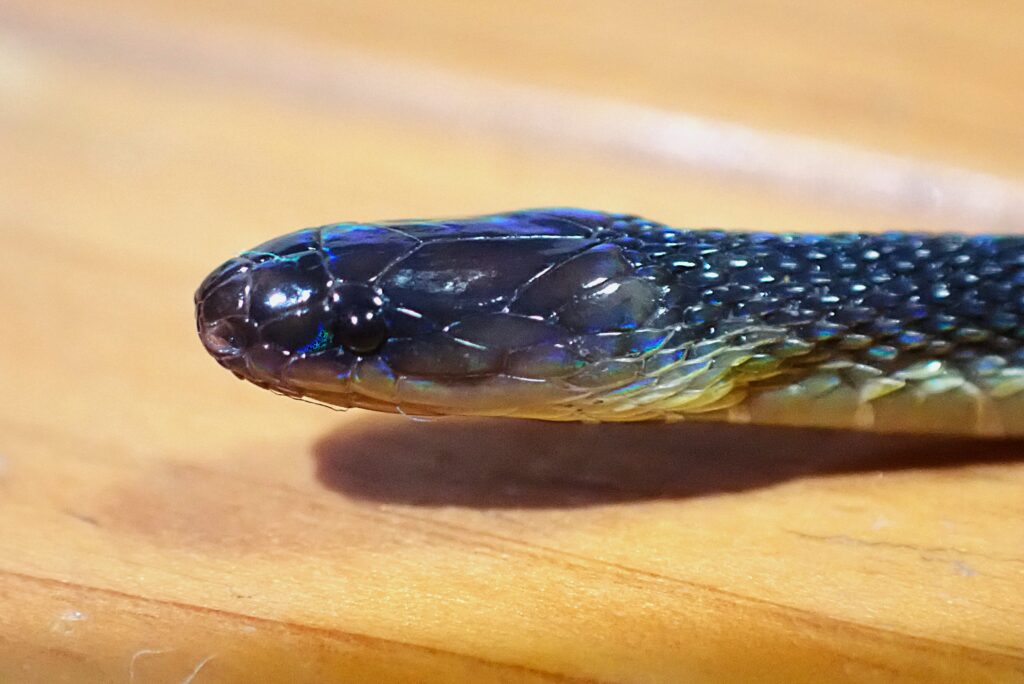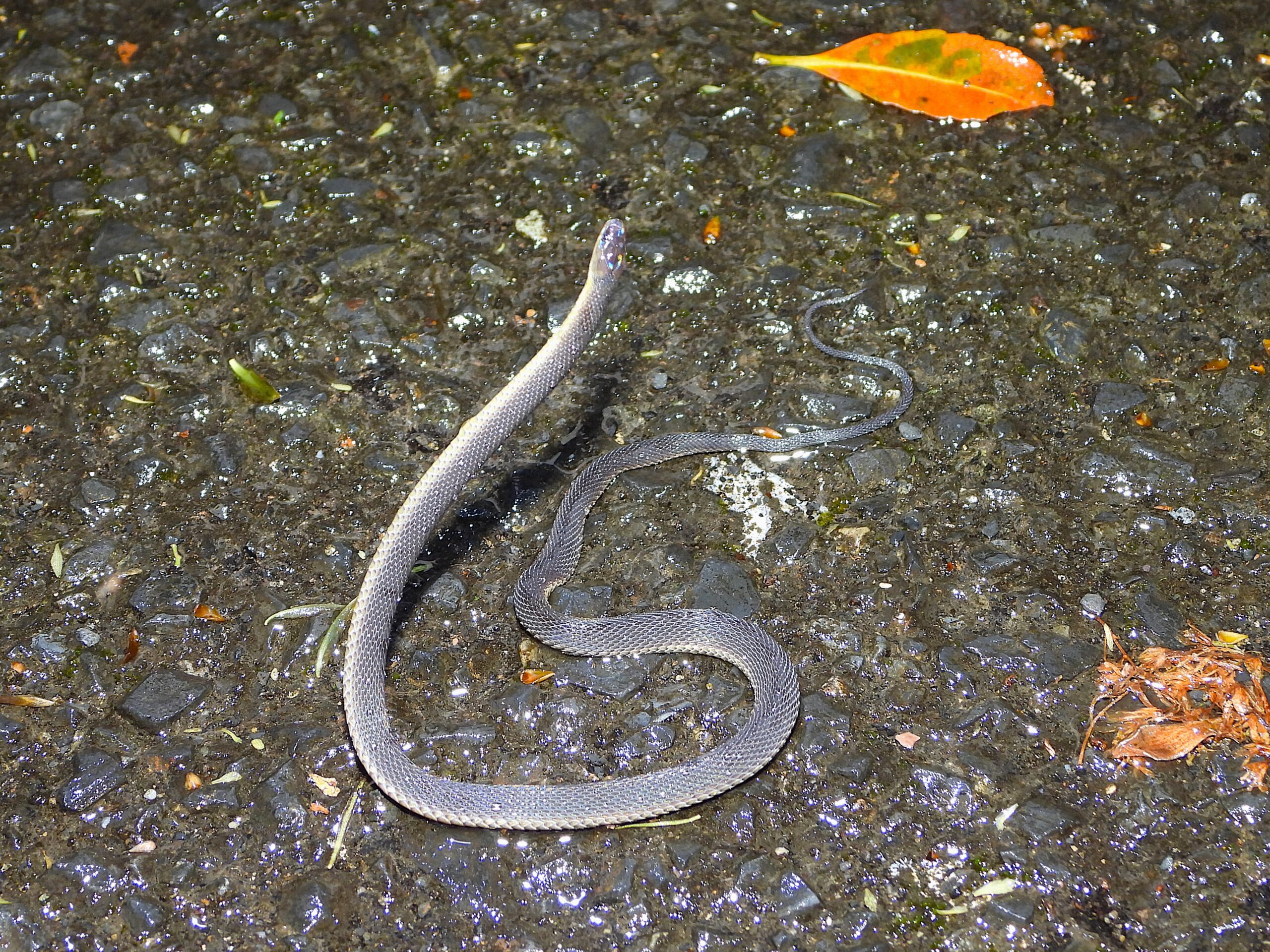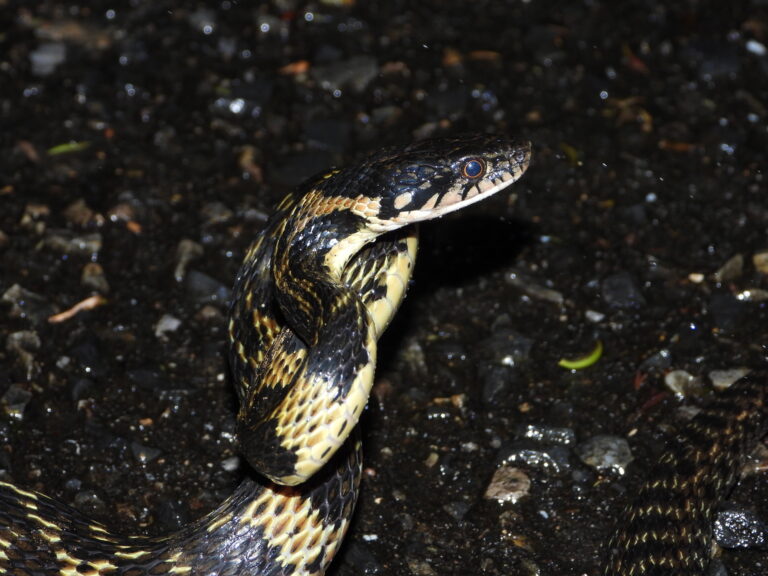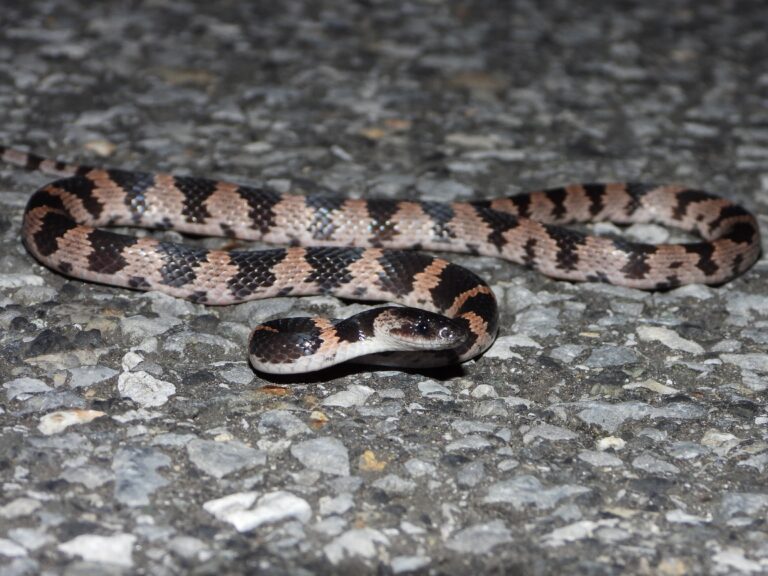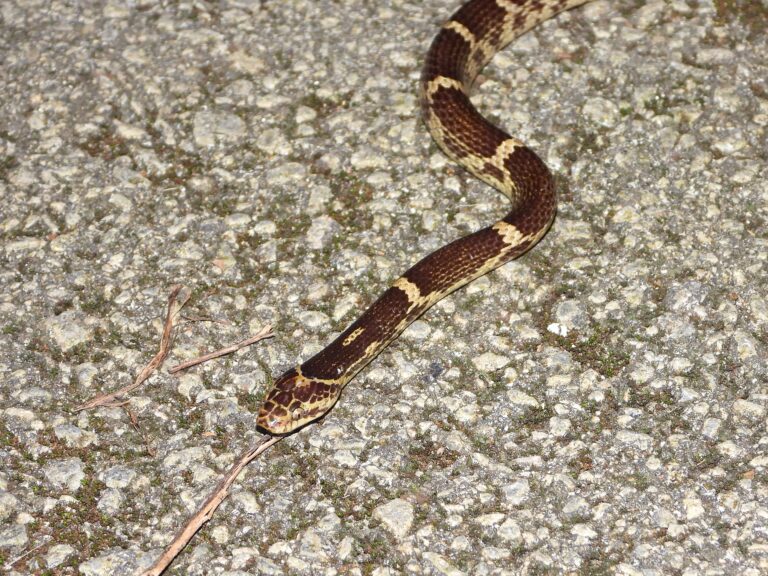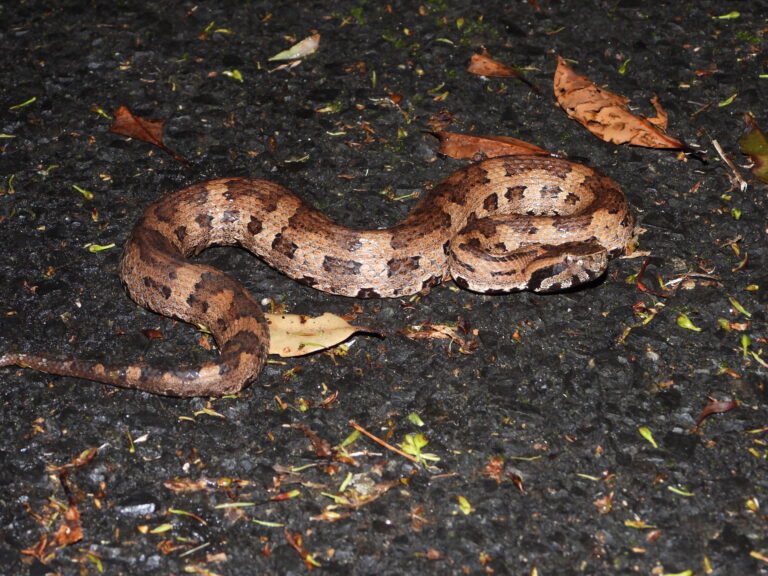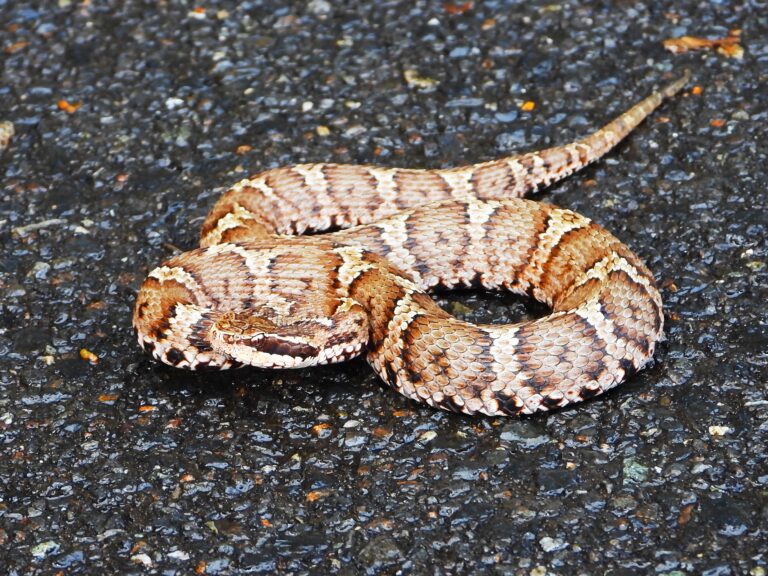Amami Odd-scaled Snake (Achalinus werneri) – Wildlife of Japan
Introduction
The Amami odd-scaled snake (Achalinus werneri) is a small, secretive serpent endemic to Japan’s Ryukyu Islands. Belonging to the family Xenodermidae, it is known for its iridescent, “odd” scales and subterranean habits. With its limited range and reclusive behavior, this rare species represents the hidden diversity of Japan’s island forests.
Appearance
This slender snake typically measures between 30 and 60 cm in total length. Its dorsal coloration ranges from dark olive to brown-black, often with a faint midline stripe, while the ventral surface is yellowish. The head and scales show a metallic or rainbow-like iridescence under light, giving it a striking appearance when seen up close.
Habitat & Distribution
The Amami odd-scaled snake is found only in the Ryukyu Islands, including Amami Ōshima, Edateku-jima, Kakeroma-jima, Tokunoshima, Okinawa-jima, and Tokashiki-jima. It inhabits moist forest floors, hiding beneath logs, stones, and leaf litter, and can also occur near forest edges or old farmland where the soil remains damp.
Behavior
This species is mainly nocturnal and secretive. During the day it stays hidden beneath debris or within the leaf-litter layer, becoming active at night when humidity rises. Because of its fossorial and crepuscular habits, it is rarely encountered even in areas where it is known to occur.
Diet
The Amami odd-scaled snake has a specialized diet consisting mainly of earthworms and other soft-bodied invertebrates. It swallows its prey rapidly, aided by its narrow head and flexible jaws—an adaptation to its underground feeding lifestyle.
Reproduction
This species is oviparous, laying small clutches of 3–8 eggs. Breeding is thought to occur in spring, with eggs deposited in moist soil or under decaying wood. Detailed life-history information remains limited due to its secretive nature.
Conservation
The IUCN Red List classifies Achalinus werneri as Near Threatened (NT). The species is vulnerable to habitat destruction caused by forest clearing, road construction, and drying of forest-floor microhabitats. Invasive predators such as mongooses have also impacted local populations. Conservation efforts focus on protecting undisturbed forest floors and maintaining habitat connectivity between island populations.
Author’s Impression
Based on field experience, searching forest roads after rain increases the chance of encountering this snake. The damp forest glistens with moisture, and sometimes a slender body slips quietly between wet leaves. Because some individuals are extremely thin and small, patience and careful observation are key when exploring at night.
